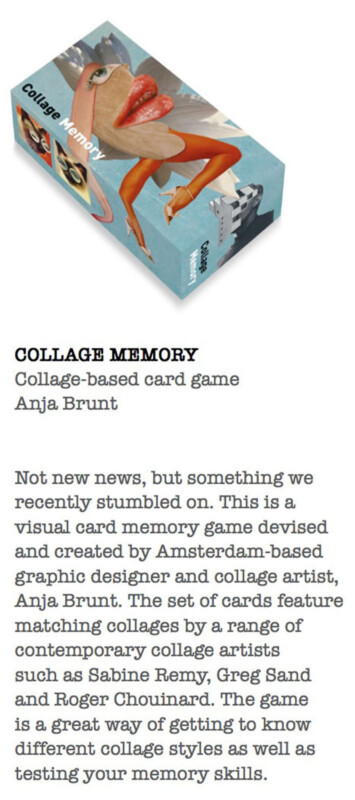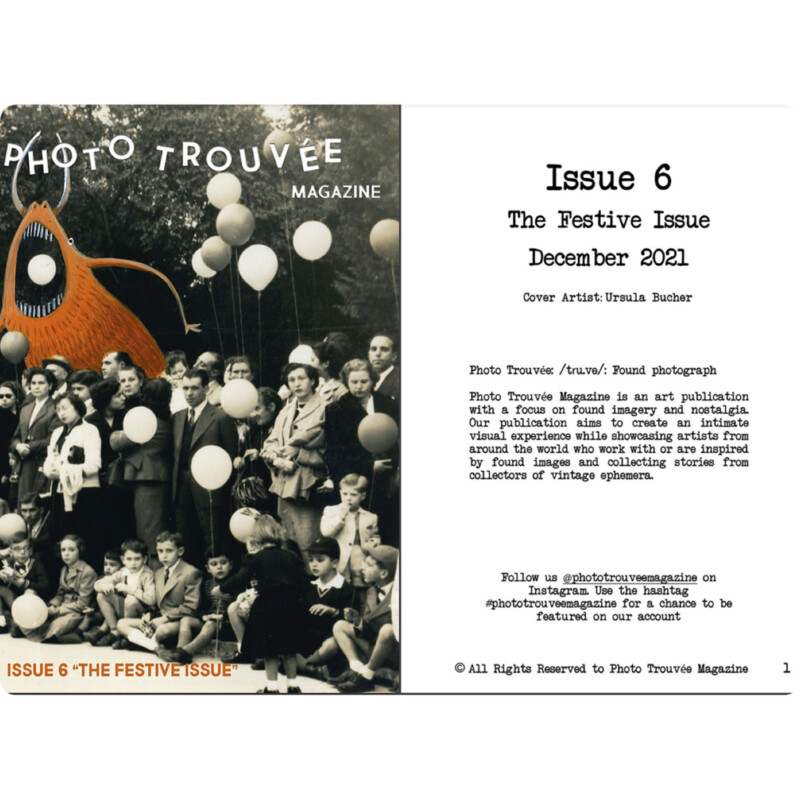
Das ist der Text, den ich für die Publikation „The reflected image“ von Maria Elisa Quiaro geschrieben habe – in deutsch und in englisch:
Kollaborative Kunst – Mehr als die Summe seiner Teile
Die Möglichkeiten der Zusammenarbeit in der Kunst sind vielfältig.
Es gibt unterschiedlichste Rahmenbedingungen, die festgelegt und ausgefüllt werden müssen: wann, über welchen Zeitraum, wo, wie und mit wem man zusammen arbeitet.
Es gibt temporäre und dauerhafte Kollaborationen mit einem oder mehreren Künstlern. Es gibt projektbezogene, thematisch spezifische oder freie Zusammenarbeiten. Es gibt Kollaborationen, in denen erkennbar ist, welcher Bestandteil des Ergebnisses welchem Künstler zuzuordnen ist. Und es gibt Zusammenarbeiten, deren Ergebnis wie aus einem Guß erscheinen und die individuelle künstlerische Position nicht eindeutig erkennen lässt. Es gibt Kollaborationen, die mehr auf den Prozeß fokussiert sind, andere wiederum mehr auf das Ergebnis.
Auch die Beweggründe eines jeden, sich auf eine Kooperation einzulassen, sind so unterschiedlich wie die teilnehmenden Künstler selbst.
Allen Kollaborationen gemein ist, das eine Verbindung entsteht – auf persönlicher, künstlerischer und oder inhaltlicher Ebene – ohne Notwendigkeit und ohne Berechnung. Diese Art der Begegnung erfordert eine gewisse soziale Kompetenz.
Kollaborateure müssen sich auf Neues einlassen können und dazu bereit sein, sich von eigenen konkreten Vorstellungen über das Ergebnis zu lösen und ergebnisoffen zu arbeiten. Sie sollten respektvoll und kreativ mit dem Vorgefundenen umgehen und es weiterentwickeln.
All das macht kollaborative Kunst so unendlich vielfältig und abwechslungsreich und für mich so spannend.
Als ich mich vor vielen Jahren entschied, mich ausschließlich auf Collagen zu konzentrieren, wuchs schnell und deutlich der Wunsch nach Austausch mit anderen Collagekünstler. Es reichte mir schon bald nicht mehr aus, meine eigenen Collagen auf meiner Homepage und in den Social Media zu zeigen. Mein Bedürfnis ging weiter – ich wollte Kontakte zu anderen Collagekünstlern herstellen, mich künstlerisch und inhaltlich austauschen und mit anderen zusammen arbeiten, über Länder- und Sprachgrenzen hinweg.
In einer online Gruppe, deren Austausch darin bestand, das die Teilnehmer wöchentlich thematisch bezogene Collagen erstellten und den anderen zeigten, lernte ich Lynn Skordal kennen. Ich fragte sie, ob sie Interesse hat, mit mir zusammen zu arbeiten – und so kollaborieren wir seit 2013, in dem wir uns eine begonnene Collage, einen sogenannten Starter, und die jeweils fertiggestellte Collage per Post auf ihren 8000 km langen Weg hin und her schicken. Über die Jahre sind so über 100 gemeinsame Collagen entstanden. Eine gegenseitig künstlerische, inhaltliche und persönlich sehr bereichernde, fortlaufende Kollaboration.
Diese positiven Erfahrungen motivierten mich, meine Kontakte und Zusammenarbeiten auszuweiten. Inzwischen habe ich mit vielen Collagekünstlern von allen Kontinenten zusammengearbeitet, an vielen unterschiedlichen Kollaborationsprojekten teilgenommen und seit 2014 auch selber Projekte ins Leben gerufen.
Mein derzeitiges, fortlaufendes Kollaborationsprojekt ist das der „Ungleichen Zwillinge“: Zwei gleiche Bücher aus der Insel Bücherei dienen als Grundlage und werden von mir an den jeweiligen Kollaborationspartner verschickt. Beide gestalten eins der beiden Bücher als Starter, beide beenden das jeweils andere, so dass am Ende zwei Originale Bücher entstanden sind. Jeder erhält sein gestartetes Buch zurück. Die Zwillinge wurden bereits in drei Ausstellungen gezeigt – eine weitere ist in Planung.
Ich erlebe künstlerische Zusammenarbeit als gegenseitige Ergänzung und Anregung. Sie bietet die Chance des gegenseitigen Austauschs und eines möglichen Lerneffekts hinsichtlich Techniken und Materialien. Das kann für alle Beteiligten als sehr gewinnbringend und bereichernd sein.
Für mein eigenes künstlerisches Schaffen bieten Kollaborationen Chancen und Freiräume, in denen ich aus mir und teilweise auch aus meiner Komfortzone heraus kommen, Neues kennenlernen und ausprobieren kann. Ein offenes, unverkrampftes und entspanntes Einlassen kann neue Inspiration bringen und Impulse für die eigene kreative Arbeit geben. Sie erweitern den Horizont der Kollaborationspartner und ermöglichen ihnen eine künstlerische Weiterentwicklung.
Diese Synergieeffekte schätze ich sehr.
Die Arbeitsprozesse sind so vielfältig wie es Kollaborationen gibt. Das Erstaunliche aber für mich ist immer wieder, dass durch die ergebnisoffene Zusammenarbeit mit den unterschiedlichsten Künstlern jedes Mal ein nicht vorhersehbares Ergebnis entsteht, ein Werk, das die Möglichkeiten des Einzelnen übersteigt – und das deswegen mehr ist als die Summe seiner Teile.
Sabine Remy, März 2021
english version:
This is the text I wrote for the publication „The reflected image“ by Maria Elisa Quiaro – in English:
Collaborative Art — More Than the Sum of Its Parts
The possibilities of collaborative work in the field of art are endless.
Different parameters have to be set and met: when, during which period, where, how, and with whom one collaborates. There are temporary and enduring collaborations with one or more artists. Collaborative work can be project-based, linked to a theme, or improvised. There are collaborations where one can spot which elements of the final work can be attributed to each artist. And there are outcomes from collaborative works that appear to be seamless, refraining from clearly disclosing any individual artistic approach. There are collaborations whose focus leans towards the process, while others lean towards the result.
The motives behind one’s decision to take part in collaborative work can be as varied as the participating artists themselves.
What all collaborations have in common is that a connection arises—on a personal, artistic, and/or content level—without having been prompted by necessity or planning. Such an encounter demands certain social skills.
Collaborators must be willing to step into uncharted territory and be ready to break away from their own fixed ideas on the outcome, working with an open mind instead. They need to approach what comes out of the process respectfully and creatively, refining it as they go along.
This is what makes collaborative art so infinitely diverse and varied—and so exciting to me.
When I decided many years ago to focus exclusively on collage, the desire for exchanges with other collage artists grew quickly and decisively. It was soon not enough for me to show my collages on my home page or social media. I needed more—I wanted to have contact with other collage artists, exchange ideas in terms of art and content, and collaborate with others across geographic and language borders.
It was in an online group, whose activity was focused on participants weekly sharing collages developed from a theme, that I came to know Lynn Skordal. I asked her if she would be interested in working together, and we have been collaborating since 2013. We send each other by post the beginning of a collage—a so-called “starter”—as well as its finished result back and forth across the long distance of 8,000 km. Over the years, more than one hundred collages were created in this way—an ongoing collaboration whose reciprocity has been very rewarding on artistic, content, and personal levels.
These positive experiences led me to expand my contacts and collaborative work. Since then, I have collaborated with many artists across all continents, participated in many different collaborative projects, and, starting in 2014, also initiated projects myself.
My current, ongoing collaborative project is called “Die ungleichen Zwillinge” (“The Unequal Twins”). Two identical copies of a book from the Insel-Bücherei series serve as the project’s basis, which I then send to the collaborator. At first, both intervene in one of the books as a “starter,” and then finish the other’s book so that in the end two original books are created. Each participant gets back the book they had started with. These twin books have already been shown in three exhibitions, and another one is in the works.
I see collaborative works in art as being both complementary and stimulating. They provide the opportunity for a reciprocal exchange and a learning experience in terms of techniques and materials, which can be profitable and enriching for all participants.
Collaborations offer my own artistic practice opportunities and the creative freedom to open up and partially step out of my comfort zone, getting to know new things and to try them out. An open, flexible, and relaxed engagement allows new sources of inspiration to be found and provides one with stimuli for their own creative work. Collaborations broaden the horizons of the artists involved, enabling them to further develop their practice.
I greatly value the effects produced by this synergy.
There are as many working processes as there are ways to collaborate. For me, however, the most astonishing thing is that, through an open-minded collaborative work with different artists, an unforeseen result is produced each time, a work that surpasses individual potential—and which, therefore, is more than the sum of its parts.
Sabine Remy
March 2021
Translated by Good & Cheap Art Translators (unpaid advertising)






















